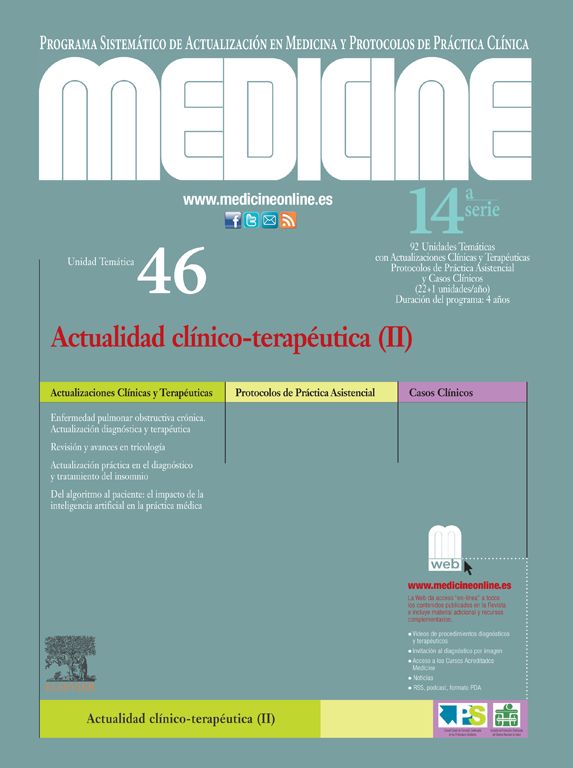La infección pleural es la invasión de las membranas pleurales y el espacio entre ambas por diferentes microorganismos, bien de forma directa o indirecta. De entre ellas destacan la infección paraneumónica y la tuberculosa por su frecuencia y tratamientos específicos. La prueba de imagen de elección en el momento actual es la ecografía torácica, tanto para el diagnóstico como para guiar la toracocentesis, detectar complicaciones locales y realizar el seguimiento. Es necesario el análisis bioquímico y microbiológico del líquido pleural para confirmar la infección, identificar las complicaciones y guiar el tratamiento. La demora en el inicio del tratamiento antibiótico se relaciona con una alta morbilidad y mortalidad, por lo que este se iniciará de forma empírica en la mayoría de los casos. Si el derrame pleural está complicado, se debe valorar la realización de técnicas invasivas sobre la cavidad pleural como: la colocación de drenajes pleurales, la instilación en el espacio pleural de fármacos fibrinolíticos y fármacos antiviscosos y el tratamiento quirúrgico en presencia de tabiques en el espacio pleural, ausencia de reexpansión pulmonar o complicaciones no controladas con tratamiento previo. El retraso en la realización de estos tratamientos también aumenta la morbilidad y mortalidad de la enfermedad.
Palabras clave
Pleural infection is an invasion of the pleural membranes and the space between them by different microorganisms either directly or indirectly. Of note among them are parapneumonic infection and tuberculosis, given their frequency and specific treatments. The imaging test of choice at present is a chest ultrasound, both for the diagnosis and for guiding the thoracentesis, detecting local complications, and providing follow-up. A biochemical and microbiological analysis of the pleural fluid are necessary for confirming the infection, identifying complications, and guiding treatment. Delays in starting antibiotic treatment are related to high morbidity and mortality. Therefore, treatment will be started empirically in most cases. If the pleural effusion is complicated, performing invasive techniques in the pleural cavity should be evaluated. These techniques include the placement of pleural drainage, instillation of fibrinolytic drugs and viscosity-reducing drugs in the pleural space, and surgical treatment if there are septi in the pleural space, an absence of pulmonary re-expansion, or uncontrolled complications of previous treatment. A delay in providing these treatments also increases the disease's morbidity and mortality.
Keywords
Identifíquese
¿Aún no es suscriptor de la revista?
Comprar el acceso al artículo
Comprando el artículo el pdf del mismo podrá ser descargado
Teléfono para incidencias
De lunes a viernes de 9h a 18h (GMT+1) excepto los meses de julio y agosto que será de 9 a 15h






